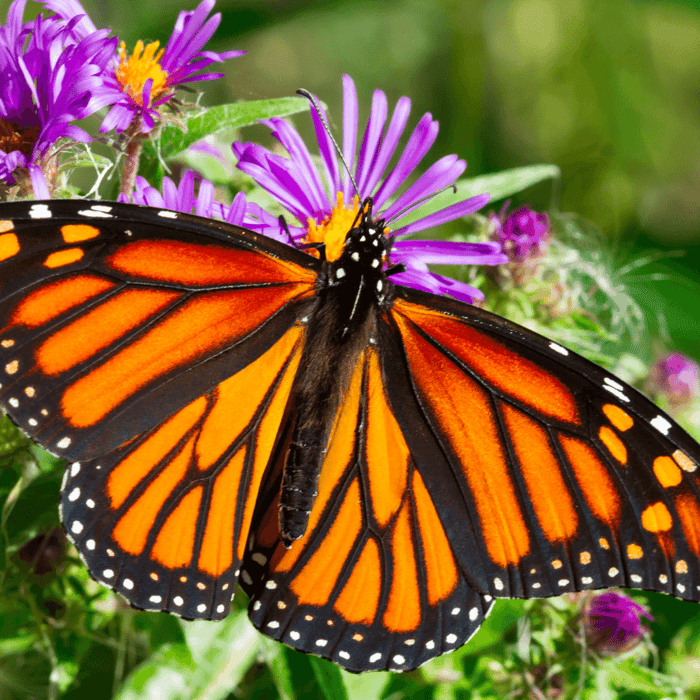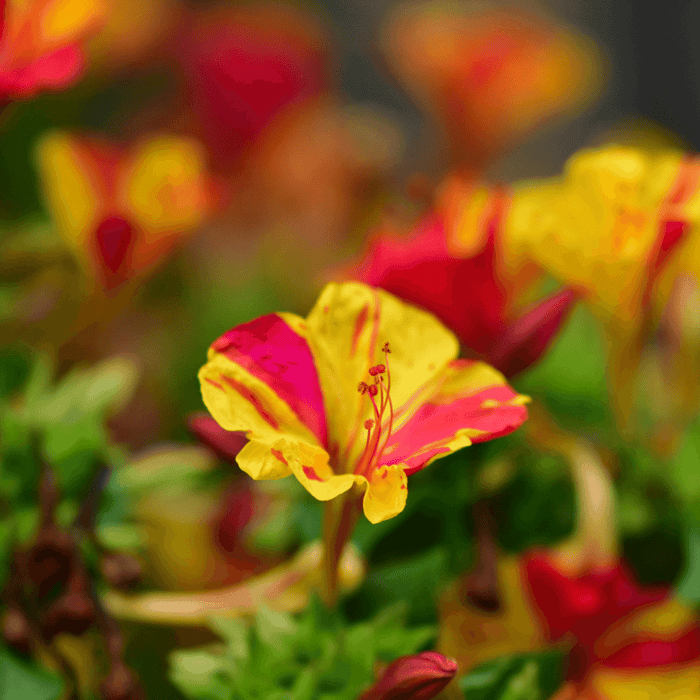Morning glories are beautiful, fast-growing vines that add a touch of elegance to any garden. They produce stunning trumpet-shaped flowers in various colors, making them popular among many gardeners. In this guide, we will explore are morning glories easy to grow from seed, and provide a step-by-step guide to help you succeed in cultivating these lovely plants.
Table of Contents:
- Plant Characteristics
- Choosing the Right Morning Glory Variety
- Preparing the Seeds
- Planting Morning Glory Seeds
- Caring for Morning Glory Vines
- Enjoying Morning Glory Blooms
- Collecting Morning Glory Seeds
- Morning Glories and Children or Pets
- Potential Challenges
- Frequently Asked Questions (FAQ)
Plant Characteristics
Here's a bulleted list of plant characteristics to help you better understand morning glories:
- Native: Central and South America
- Family: Convolvulaceae
- Genus: Ipomoea
- Common Name: Morning Glory
- History of the Seed: Cultivated for ornamental and medicinal purposes for centuries
- Days till Maturity: 50-100, depending on the variety
- Planting Depth: 1/4 - 1/2 inch
- Plant Spacing: 6-12 inches
- Days to Germination: 5-21 days
- Indoors or Direct Sown: Can be started indoors or directly after the last frost.
- Full Sun or Partial Shade: Full sun
- When to harvest: Enjoy flowers throughout the growing season; collect seeds in late summer or early fall.
- Plant Height: Varies by variety, typically 6-15 feet
- Plant Width: 3-6 feet, depending on the type and growing conditions
Heavenly Blue Morning Glory Seeds

$2.49
Heavenly Blue Morning Glory Seeds - Non-GMO, Heirloom, Open-Pollinated, Non-Hybrid - Planting Instructions, Growing Guide, and More Elevate your garden with Heavenly Blue Morning Glory seeds, a classic and stunning vining flower variety that delivers vibrant, sky-blue blooms with radiant… read more
Choosing the Right Morning Glory Variety
Numerous morning glory varieties are available, each with its unique characteristics. Some popular morning glory flower seed varieties include:
-
Heavenly Blue: This classic variety of heavenly blue morning glory seeds produces large, sky-blue flowers with white throats. It is one of the most popular morning glory varieties and is well-suited for most gardens.
- Grandpa Ott: This heirloom variety called grandpa ott morning glory seeds produces deep purple flowers with a magenta starburst center, adding a rich and vibrant touch to your garden.
-
Scarlet O'Hara: This variety features deep red flowers with white throats, adding a bold splash of color to your garden.
-
Pearly Gates: This variety boasts pristine white flowers, creating a delicate and elegant appearance.
-
Flying Saucers: This unique variety produces large, multicolored flowers with a tie-dye effect, making it an eye-catching addition to any garden.
When selecting a variety, consider factors such as color preferences, mature plant size, and the overall look you want in your garden.
Preparing the Seeds
Before planting your morning glory gardening seeds, it's essential to prepare them properly to ensure successful germination. Morning glory seeds have a tough outer seed coat that can make it difficult for water to penetrate. To speed up the germination process, follow these steps:
-
Soak the seeds: Place the seeds in a bowl and cover them with warm water. Allow them to soak overnight or for at least 12 hours. This will help soften the seed coat and promote germination.
-
Scarify the seeds: After soaking, gently nick or file a small part of the seed coat to make it easier for water to enter the seed. Be careful not to damage the embryo inside the seed. Scarification can significantly improve germination rates. This is an important step for these seeds that shouldn't be skipped.
Planting Morning Glory Seeds
Now that your seeds are prepared, it's time to plant them in your flower garden. Follow these steps to successfully grow morning glories from seeds:
-
Choose the right time: Morning glories should be planted after the last frost date in your area when the soil has warmed up to at least 64°F. This is typically in late spring or early summer.
-
Select the planting site: Morning glories need full sun and well-draining soil to thrive. Choose a location with at least 6 hours of direct sunlight per day. Plant them near a fence, trellis, or other support structure to accommodate their climbing habit.
-
Prepare the soil: Loosen the soil in the planting area to a depth of 8-12 inches and mix in some compost or well-rotted manure to improve soil fertility. This will help your morning glories establish a strong root system and support healthy growth.
-
Plant the seeds: Plant the prepared seeds 1/4 to 1/2 inch deep and space them 6-12 inches apart. Cover the seeds with soil and gently firm the surface to ensure good seed-to-soil contact.
-
Water the seeds: Water the planting area thoroughly, ensuring the soil is moist but not waterlogged. Keep the soil consistently moist throughout the germination period, which can take 5-21 days, depending on the variety and growing conditions.
Grandpa Ott Morning Glory Seeds

$2.49
Grandpa Ott Morning Glory Seeds - Heirloom, Non-GMO, Vibrant Purple Climbing Blooms Transform your garden into a vibrant oasis with Grandpa Ott Morning Glory seeds! These stunning heirloom, non-GMO, non-hybrid, and open-pollinated seeds produce rich, deep purple flowers with a striking… read more
Caring for Morning Glory Vines
Once your morning glory seeds have germinated and started to grow, follow these care tips to ensure a successful and beautiful display:
-
Watering: Morning glories prefer consistently moist but well-draining soil. Water them regularly, especially during dry periods, to moisten the soil. Avoid over-watering, as this can lead to root rot and other issues.
-
Fertilizing: Apply a balanced, slow-release fertilizer at planting time and again during the growing season to support healthy growth. Be cautious not to over-fertilize, which can lead to excessive foliage growth and fewer blooms.
-
Support: Provide a sturdy support structure for your morning glory vines to climb, such as a trellis, fence, or pergola. This will encourage vertical growth and help create a more attractive display.
-
Companion planting: Consider planting morning glories with compatible companion plants, such as sunflowers, roses, corn, or nasturtiums. This can create a more diverse and visually appealing garden while providing mutual benefits to the plants.
-
Pruning: Regularly deadhead spent flowers, thin out dense vines, and trim back excessively long or unruly vines to maintain the desired shape and size of your morning glory display.
Enjoying Morning Glory Blooms
Morning glory blooms typically open early and close by midday, giving them their name. They provide a stunning display of color throughout the growing season, which usually lasts from late spring to early fall. To encourage more blooms, remove spent flowers regularly and avoid over-fertilizing the plants.
Collecting Morning Glory Seeds
If you wish to collect seeds for the next growing season, allow some seed pods to mature and dry on the vine. Once they have turned brown and become brittle, carefully collect the pods and store them in a cool, dry place until you are ready to plant them next year.
Morning Glories and Children or Pets
While morning glories are a beautiful addition to any garden, it's essential to be aware of their potential toxicity. All parts of the morning glory plant, especially the seeds, contain compounds called alkaloids, which can be toxic if ingested in large quantities. Symptoms of morning glory poisoning in humans and pets can include vomiting, diarrhea, hallucinations, and, in severe cases, seizures or coma.
To minimize the risk of accidental ingestion, plant morning glories in a location that is not easily accessible to young children or pets. If you suspect a child or pet has ingested morning glory seeds or plant material, immediately contact a healthcare professional or veterinarian for guidance.
Potential Challenges
Growing morning glories is generally an easy and rewarding gardening project, but there can be some challenges that gardeners may face:
-
Invasive tendencies: In some regions, morning glories can become invasive and spread aggressively. To prevent unwanted spreading, remove any seed pods before they mature and regularly monitor the growth of your vines to ensure they don't invade other areas of your garden.
-
Slower germination in colder climates: Gardeners may experience slower germination rates due to cooler soil temperatures. To overcome this challenge, start seeds indoors 4-6 weeks before the last frost date and transplant them outdoors once the soil has warmed up.
-
Competition with other plants: As mentioned earlier, morning glories can grow rapidly and may outcompete other plants in your garden. Ensure there is enough space between your morning glories and other plants to allow all of them to grow and thrive.
 Frequently Asked Questions (FAQ) - Are Morning Glories Easy to Grow from Seed
Frequently Asked Questions (FAQ) - Are Morning Glories Easy to Grow from Seed
Q1: Can morning glories be grown in containers?
A: Yes, morning glories can be grown in containers with adequate space and a suitable support structure for climbing the vines. Choose a large container with good drainage, and use a high-quality potting mix to ensure optimal growth.
Q2: Are morning glories perennials or annuals?
A: Morning glories are generally considered annuals, as they complete their life cycle within one growing season. However, in some warmer climates, they may behave like perennials, surviving through the winter and growing the following year.
Q3: Do morning glories attract pollinators?
A: Yes, morning glories are attractive to various pollinators, including bees, butterflies, and hummingbirds. Planting morning glories in your garden can help support a healthy ecosystem and encourage biodiversity.
Q4: Why are my morning glories not blooming?
A: Several factors can affect the blooming of morning glories, including insufficient sunlight, over-fertilization, and lack of water. Ensure your morning glories receive at least 6 hours of direct sunlight daily, avoid over-fertilizing, and provide consistent moisture to encourage blooming.
Q5: How do I control morning glory pests?
A: Morning glories can be affected by pests such as aphids and leaf miners. To control these pests, regularly inspect your plants for signs of infestation and treat them with insecticidal soap or neem oil if necessary. Encouraging beneficial insects like ladybugs can also help control pests naturally.
Q6: Can I grow morning glories indoors?
A: While it is possible to grow morning glories indoors, they may not thrive as well as outdoors due to the lack of direct sunlight. If you grow morning glories indoors, place them in a sunny window and provide a support structure for the vines to climb. Be aware that indoor morning glories may not produce as many flowers as outdoors.
Q7: How do I prevent morning glories from becoming invasive?
A: To prevent morning glories from becoming invasive, remove any seed pods before they mature and regularly monitor the growth of your vines to ensure they don't invade other areas of your garden. Additionally, planting morning glories in containers can help contain their growth and prevent unwanted spreading.
In conclusion, morning glories are easy to grow from seed and provide a stunning display of color throughout the growing season. By following the step-by-step guide outlined in this article, even novice gardeners can enjoy the beauty of these enchanting flowers in their gardens. With proper care and attention, morning glories can be a rewarding and low-maintenance addition to any flower garden.







